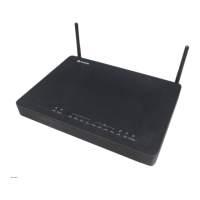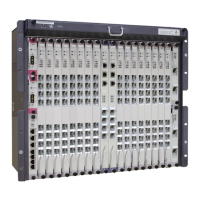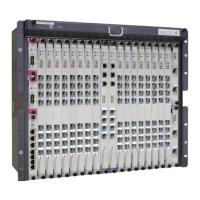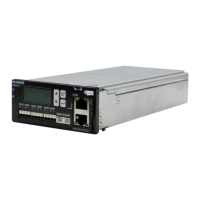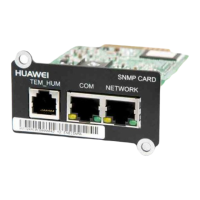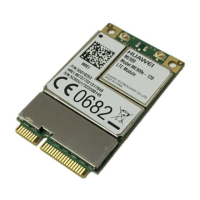l After the port loopback is configured, the broadcast storm may occur if the E1 port is not
isolated. Therefore, it is recommended that you run the undo loopback command to cancel
the loopback in time after the loopback test is complete.
Precautions
The loopback cannot be configured if the E1 port is in any of the following states:
l Idle
l Blocked
The loopback of each E1 port is configured independently and only one type of loopback can
be configured each time. That is, if you need to configure another loopback after configuring a
loopback, you need to cancel the existing loopback and then configure another loopback.
Procedure
l Configure a remote loopback on the E1 port.
1. (Optional; perform this operation when using the emulation terminal.) Connect the
transmit and receive ends of the E1 line on the tested E1 port to the corresponding
ports on the emulation terminal, and ensure that they are in good contact.
2. Start the remote loopback on the E1 port.
For example, run the loopback command in TDM mode to start the remote loopback
on port 0/1/0.
huawei(config-if-tdm-0/1)#loopback 0 remote
3. Verify the loopback result.
By checking whether the peer device receives the signal sent by itself (for example,
if the remote loopback is started on a port, the user of the peer device should hear the
voice of himself/herself when making calls), you can determine whether the tested
link is accessible. If an emulation terminal such as the E10 meter is used, you can
determine the result according to the indication on the meter.
l Configure a local loopback on the E1 port.
1. (Optional; perform this operation when using the emulation terminal.) Connect the
transmit and receive ends of the E1 line on the tested E1 port to the corresponding
ports on the emulation terminal, and ensure that they are in good contact.
2. Start the local loopback on the E1 port.
For example, run the loopback command in TDM mode to start the local loopback
on port 0/1/0.
huawei(config-if-tdm-0/1)#loopback 0 local
3. Verify the loopback result. By checking whether the local device receives the signal
sent by itself (for example, if the local loopback is started on the port, the user of the
peer device should hear the voice of himself/herself when making calls), you can
determine whether the tested link is accessible. If an emulation terminal such as the
E10 meter is used, you can determine the result according to the indication on the
meter.
----End
References
The E1 port on the device supports two types of loopbacks.
SmartAX MA5612 Multi-service Access Module
Maintenance Guide 8 Common Operation
Issue 01 (2012-07-25) Huawei Proprietary and Confidential
Copyright © Huawei Technologies Co., Ltd.
248
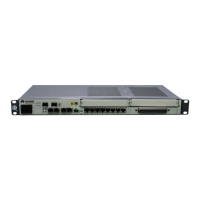
